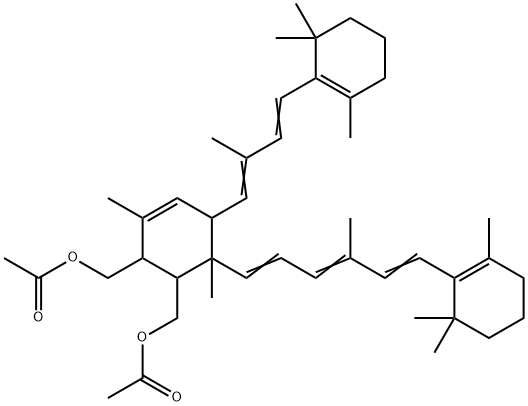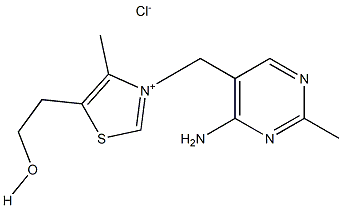Vitamin A palmitate
Synonym(s):all trans-Retinol palmitate;all−trans−Retinol palmitate;Retinyl palmitate;Retinyl palmitate solution;Vitamin A palmitate
- CAS NO.:79-81-2
- Empirical Formula: C36H60O2
- Molecular Weight: 524.86
- MDL number: MFCD00019414
- EINECS: 201-228-5
- SAFETY DATA SHEET (SDS)
- Update Date: 2025-12-25 11:31:46

What is Vitamin A palmitate?
Chemical properties
95.0-100.5% Absorbance @325 nm ≥0.85%
The Uses of Vitamin A palmitate
vitamin A palmitate is known as a skin “normalizer.” It acts as an antikeratinizing agent, helping the skin stay soft and plump, and improving its water-barrier properties. Because of its impact on the skin’s water-barrier properties, it is useful against dryness, heat, and pollution. It is also an anti-oxidant and is suggested for use in sunscreens. Clinical studies with vitamin A palmitate indicate a significant change in skin composition, with increases in collagen, DnA, skin thickness, and elasticity. Vitamin A palmitate’s stability is superior to retinol.
The Uses of Vitamin A palmitate
antihypertensive
The Uses of Vitamin A palmitate
all-trans-Retinyl Palmitate is an ester derivative of Retinol (R252000). all-trans-Retinyl Palmitate is used as a vitamin supplement in the treatment of Vitamin A deficiency. all-trans-Retinyl Palmita te is used as an antioxidant and a source of vitamin A added to low fat milk and other dairy products. all-trans-Retinyl Palmitate is also a constituent of some topically applied skin care products
The Uses of Vitamin A palmitate
retinyl palmitate is a skin conditioner. This retinoid is considered a milder version of retinoic acid, given its conversion properties. once on the skin, it converts to retinol, which in turn converts to retinoic acid. Physiologically, it is credited with increasing R epidermal thickness, stimulating the production of more epidermal protein, and increasing skin elasticity. Cosmetically, retinyl palmitate is used to reduce the number and depth of fine lines and wrinkles, and prevent skin roughness resulting from uV exposure. Secondary reactions such as erythema, dryness, or irritation are not associated with retinyl palmitate. It is even more effective when used in combination with glycolic acid because it achieves greater penetration. In the united States, its maximum usage level in cosmetic formulations is 2 percent. Retinyl palmitate is the ester of retinol and palmitic acid.
What are the applications of Application
Retinyl palmitate is an analog of vitamin A with antiproliferative effects
Definition
ChEBI: All-trans-retinyl palmitate is an all-trans-retinyl ester obtained by formal condensation of the carboxy group of palmitic (hexadecanoic acid) with the hydroxy group of all-trans-retinol. It is used in cosmetic products to treat various skin disorders such as acne, skin aging, wrinkles, dark spots, and also protect against psoriasis. It has a role as an Escherichia coli metabolite, a human xenobiotic metabolite and an antioxidant. It is a retinyl palmitate and an all-trans-retinyl ester. It is functionally related to an all-trans-retinol.
General Description
Certified pharmaceutical secondary standards for application in quality control provide pharma laboratories and manufacturers with a convenient and cost-effective alternative to pharmacopeia primary standards.
Retinyl palmitate belongs to a category of compounds called retinoids, which are chemically similar to vitamin A. It exhibits a beneficial effect on vision, skin and immune function, inhibits cell proliferation and prevents cancer. It is an important dietary as well as a therapeutic compound.
Flammability and Explosibility
Non flammable
Biochem/physiol Actions
Vitamin A palmitate is widely used in pharmaceutical applications. It is also extensively used in cosmetic formulations due to its beneficial effects on the appearance of skin and anti-oxidant properties. Vitamin A palmitate acts as a teratogen and affect vertebrate embryogenesis and regeneration. It is added as a source of vitamin A in low fat and skim milks. Vitamin A palmitate acts as a chemopreventive or antineoplastic agent.
Review: Vitamin A metabolism.
Side Effects
Vitamin A palmitate is fat-soluble and is stored in the body's fatty tissue. Therefore, excessive levels of vitamin A palmitate can lead to toxicity and liver disease. This is more likely to occur when taking supplements than when consuming them from food. People with liver disease should not take vitamin A palmitate supplements. Excessive doses of vitamin A supplements have been linked to birth defects, including malformations of the eyes, lungs, skull and heart. They are not recommended for pregnant women. Regular high doses of vitamin A letter source can lead to depression, dry skin, and muscle and joint pain.
Safety Profile
Mildly toxic by ingestion. An experimental teratogen. Experimental reproductive effects. Human mutation data reported. When heated to decomposition it emits acrid smoke and irritating fumes.
Purification Methods
The palmitate is separated from retinol by column chromatography on water-deactivated alumina with hexane containing a very small percentage of acetone. It is also chromatographed on TLC silica gel G, using pet ether/isopropyl ether/acetic acid/water (180:20:2:5) or pet ether/acetonitrile/acetic acid/water (190:10:1:15) to develop the chromatogram. It is then recrystallised from propylene at low temperature (below -47o). [Beilstein 6 IV 4135.]
Properties of Vitamin A palmitate
| Melting point: | 28-29℃ |
| Boiling point: | 546.51°C (rough estimate) |
| Density | 0.9668 (rough estimate) |
| refractive index | 1.5250 (estimate) |
| Flash point: | 194℃ |
| storage temp. | 2-8°C |
| solubility | Chloroform (Slightly), Ethyl Acetate (Slightly), Methanol (Very Slightly) |
| form | oil |
| color | Light Yellow to Yellow |
| Specific Gravity | 0.90~0.93 (20℃) |
| Water Solubility | Soluble in chloroform, ether, and vegetable oils. Insoluble in water. |
| Merck | 13,10073 |
| BRN | 1917366 |
| Stability: | Light Sensitive |
| CAS DataBase Reference | 79-81-2(CAS DataBase Reference) |
| NIST Chemistry Reference | Vitamin a palmitate(79-81-2) |
| EPA Substance Registry System | Retinol, hexadecanoate (79-81-2) |
Safety information for Vitamin A palmitate
| Signal word | Danger |
| Pictogram(s) |
 Health Hazard GHS08 |
| GHS Hazard Statements |
H412:Hazardous to the aquatic environment, long-term hazard |
| Precautionary Statement Codes |
P202:Do not handle until all safety precautions have been read and understood. P273:Avoid release to the environment. P280:Wear protective gloves/protective clothing/eye protection/face protection. P308+P313:IF exposed or concerned: Get medical advice/attention. P405:Store locked up. P501:Dispose of contents/container to..… |
Computed Descriptors for Vitamin A palmitate
| InChIKey | VYGQUTWHTHXGQB-YFAKFODJSA-N |
Vitamin A palmitate manufacturer
ZEB Pharma
New Products
Indole Methyl Resin tert-butyl 9-methoxy-3-azaspiro[5.5]undecane-3-carboxylate Boc-His(Boc)-OH 2-CTC Resin 4-Chloro-7-tosy1-7Hpyrrolo[2,3-d]pyrimidine 5,7-Dibromo-1H-indole 2,5-dichloro-N-hydroxy-4,6-dimethylpyridine-3-carboximidamide 2,2-Dimethoxy-7-azaspiro[3.5]nonane hydrochloride 4-chloromethyl-5-methyl-1,3-dioxol-2-one (DMDO-Cl) R-2-BENZYLOXY PROPIONIC ACID 1,1’-CARBONYLDIIMIDAZOLE 1,1’-CARBONYLDI (1,2-4 TRIAZOLE) N-METHYL INDAZOLE-3-CARBOXYLIC ACID 4-((2-hydroxyethyl)thio)benzoic acid 1-(TERT-BUTOXYCARBONYL)-2-PYRROLIDINONE Methyl 6-methylnicotinate 3-Pyridineacrylic acid tert-Butyl carbazate TETRAHYDRO-2H-PYRAN-3-OL 2-((4-morpholinophenylamino) (methylthio) methylene) malononitrile 3-(4-morpholinophenylamino)-5-amino-1H-pyrazole-4-carbonitrile 2,4-dihydroxybenzaldehyde 1,3-Diethyl-1,3-Diphenylurea Methyl 2-methylquinoline-6-carboxylateRelated products of tetrahydrofuran
![3-Cyclohexene-1,2-dimethanol, 3,6-dimethyl-5-[2-methyl-4-(2,6,6-trimethyl-1-cyclohexen-1-yl)-1,3-butadienyl]-6-[4-methyl-6-(2,6,6-trimethyl-1-cyclohexen-1-yl)-1,3,5-hexatrienyl]-, cis-2,cis-5- (8CI)](https://img.chemicalbook.in/)







You may like
-
 Vitamin A Palmitate 1.7 MIU 99%View Details
Vitamin A Palmitate 1.7 MIU 99%View Details -
 Vitamin A Palmitate 1:7 99%View Details
Vitamin A Palmitate 1:7 99%View Details -
 Vitamin A Palmitate, 5Kg BagView Details
Vitamin A Palmitate, 5Kg BagView Details
79-81-2 -
 Vitamin A Palmitate 1 7 MiuView Details
Vitamin A Palmitate 1 7 MiuView Details
79-81-2 -
 Vitamin A Palmitate, 5Kg DrumView Details
Vitamin A Palmitate, 5Kg DrumView Details
79-81-2 -
 Vitamin A Palmitate In Oil 1 Miu / 1.7 Miu, 99%, PowderView Details
Vitamin A Palmitate In Oil 1 Miu / 1.7 Miu, 99%, PowderView Details
79-81-2 -
 Vitamin A Palmitate 1 7 Miu, Grade Standard: IP, 98%View Details
Vitamin A Palmitate 1 7 Miu, Grade Standard: IP, 98%View Details
79-81-2 -
 Vitamin A Palmitate 1.7 MIU, 50Kg DrumView Details
Vitamin A Palmitate 1.7 MIU, 50Kg DrumView Details
79-81-2
